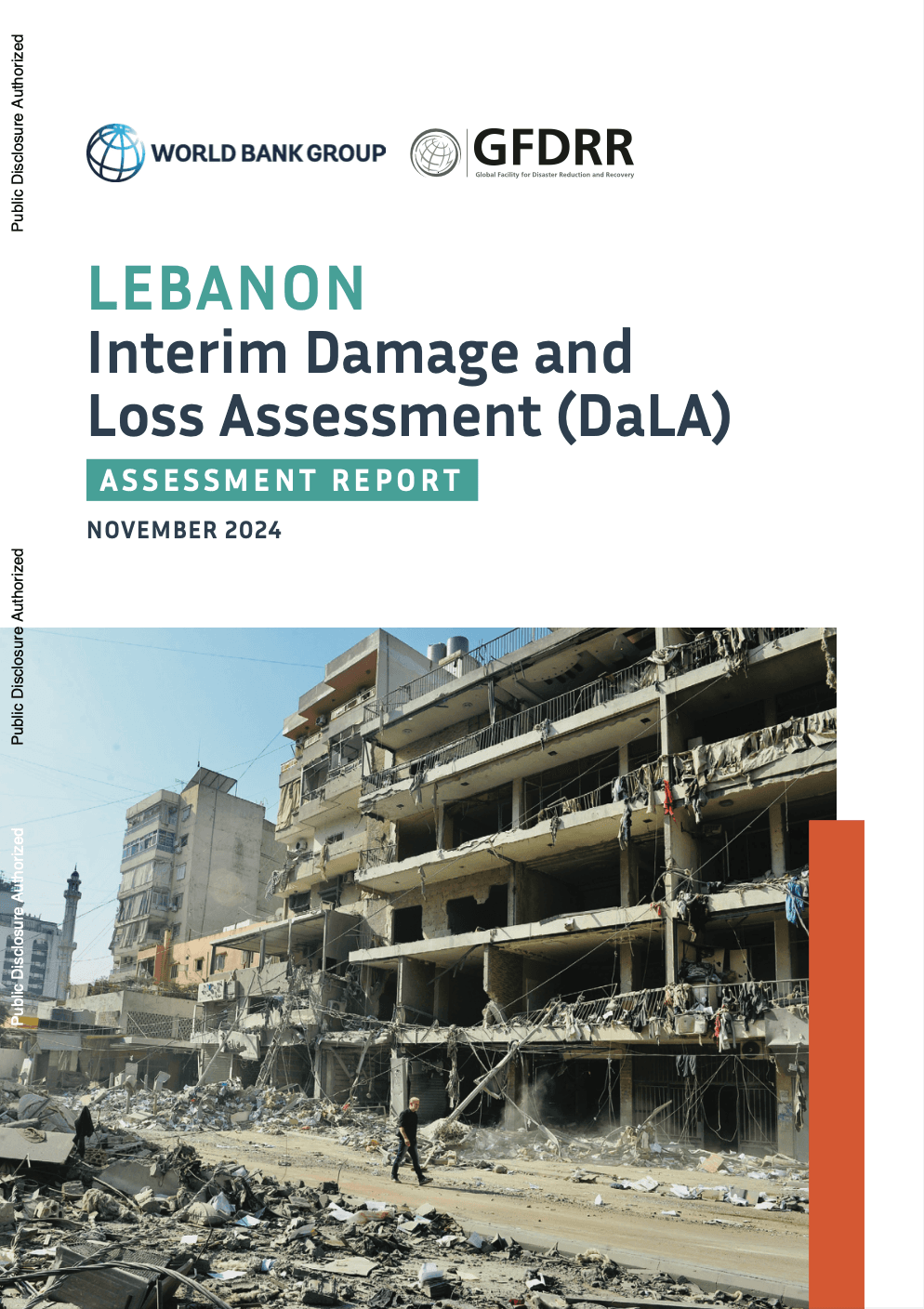The report is an Interim Damage and Loss Assessment (DaLA) conducted by the World Bank to evaluate the impact of the ongoing conflict in Lebanon as of November 2024. It estimates the damage to physical infrastructure and economic losses across multiple sectors, including housing, agriculture, commerce, health, education, environment, and tourism. The findings indicate that physical damage amounts to at least USD 3.4 billion, while economic losses are estimated at USD 5.1 billion. The conflict has also significantly affected Lebanon's GDP, reducing projected growth by at least 6.6% for 2024, exacerbating an already prolonged economic crisis that has shrunk the country's economy by more than 34% over the past five years.
The housing sector is the most heavily affected, with damage estimated at USD 2.8 billion, impacting over 99,000 housing units. The agriculture sector has sustained USD 124 million in damage, while losses due to destruction of crops, livestock, and farmer displacement exceed USD 1.1 billion. The commerce sector has suffered USD 178 million in damage and USD 1.7 billion in losses due to business closures, supply chain disruptions, and declining consumer spending. Tourism and hospitality, though incurring only USD 18 million in damage, have faced USD 1.1 billion in losses as a result of declining tourist arrivals and travel restrictions. The health sector has endured USD 74 million in damage and USD 338 million in losses, while education losses amount to USD 215 million due to school closures and student displacement.
The report also highlights severe displacement, with over 1.3 million people forced to flee their homes, further straining essential services. Environmental damage includes the destruction of forests, farmlands, and solid waste management infrastructure, leading to additional economic and public health risks. The assessment notes that these figures are conservative estimates, as the conflict is ongoing and continues to expand geographically. A comprehensive Rapid Damage and Needs Assessment (RDNA) will be conducted later to estimate the full extent of damage and recovery needs.





